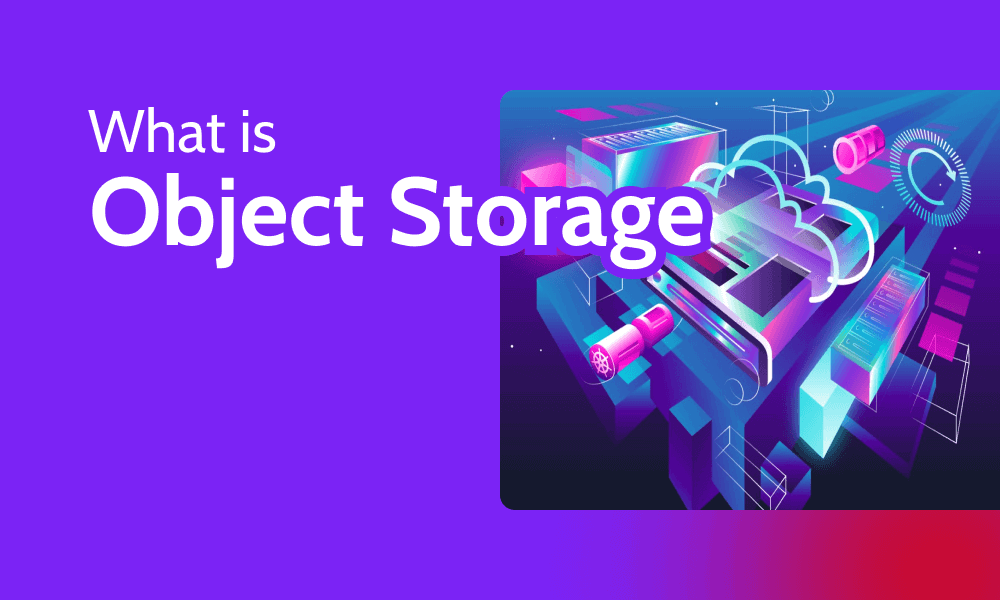Businesses and organizations generate huge amounts of unstructured data like images, sensor data, backups and log files. Traditional storage systems, such as file and block storage, struggle to handle the growing data demand. Object storage has emerged as a suitable alternative offering high scalability, cost efficiency and flexibility for managing large datasets in cloud computing.
In this article, we explore what object storage is and explain how it compares to file, block and blob (binary large object) storage. We will also look into the key benefits and potential downsides of using object storage to help us understand where it is best suited.
What Is Object Storage?
Object storage is a modern data storage architecture that stores data in discrete units called objects. Each object contains data, metadata and a unique identifier, and it is designed to efficiently handle unstructured data.
Unlike traditional data storage that uses files or blocks, object storage is built for scalability, durability and ease of management, so it is suitable for cloud environments.
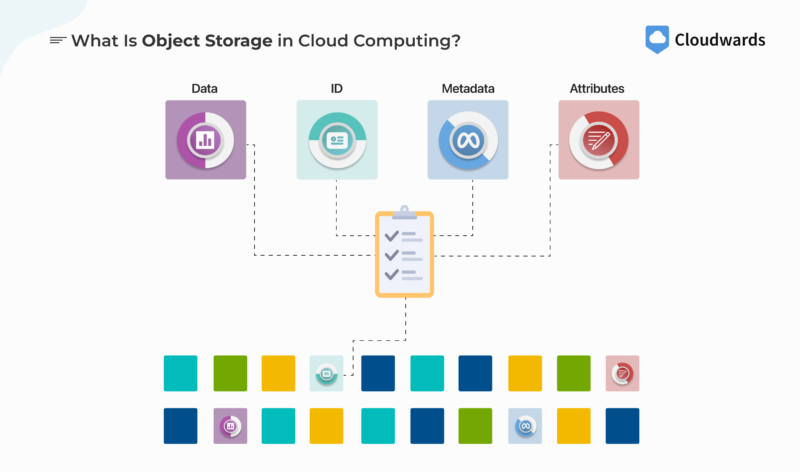
File storage relies on hierarchical directories, and block storage splits data into chunks, but object storage operates in a flat structure. This makes it highly scalable, so users can store vast amounts of unstructured data — such as images and audio files — without worrying about folder limitations or system constraints.
How Does Cloud Object Storage Architecture Work?
Object storage architecture organizes and manages data in objects that are self-contained units. They comprise three components:
- The actual data (such as files or images)
- A unique identifier like a URL or key
- Custom metadata, like descriptive tags
The flexible structure enables efficient data storage management, searchability and automation, which is ideal for large-scale data management solutions.
Object storage technology is built for distribution — object storage devices distribute objects across multiple data centers and servers to ensure redundancy and fault tolerance. Objects are retrieved using their unique identifiers via RESTful application programming interfaces (APIs). This API-driven approach enables integration with cloud-native applications, analytics tools and automation workflows.
This type of storage is designed to scale horizontally; organizations can continuously expand their storage without major architectural changes. Cloud providers such as Amazon Web Services (AWS), Google and Azure use this structure to offer virtually unlimited object storage through services like Amazon S3 and Google Cloud object storage.
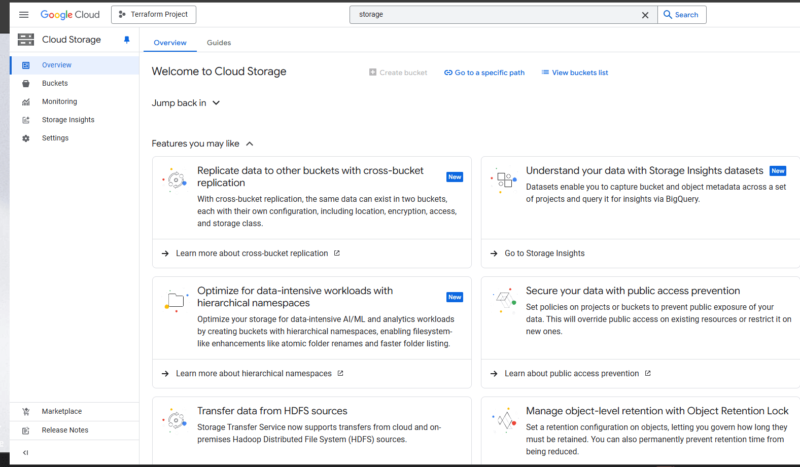
Google Cloud Platform (GCP) offers unlimited object storage solutions for its clients.
Object storage supports immutability and versioning capabilities, and it is designed to store objects in a read-only format. If there’s a change, it creates a new version of the object rather than altering the existing one. This feature enhances data integrity and security, making it a preferred choice for regulatory compliance, backup solutions and ransomware protection.
Object Storage vs Block Storage vs File Storage vs Blob Storage
It is important for businesses and cloud users to understand and choose the right storage type for their needs. This choice affects the performance, scalability and cost efficiency of the application attached to it. We will look into four types of storage — object, block, file and blob — while highlighting their key differences and suitable use cases.
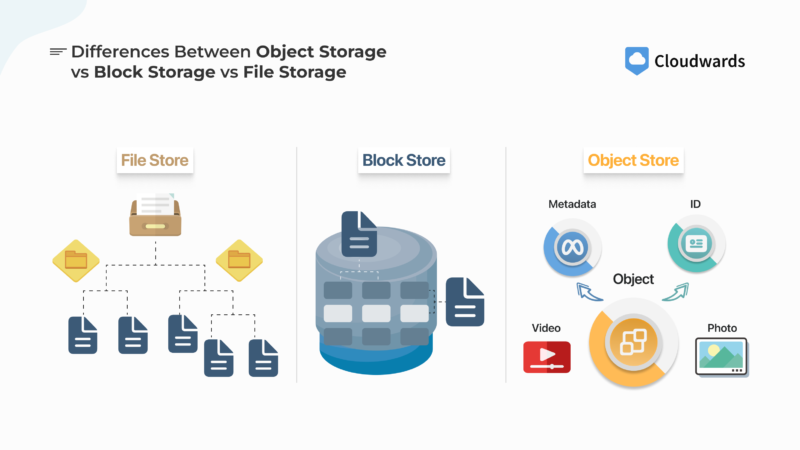
What Is Blob Storage?
Blob storage (or binary large object storage) is a type of object storage specialized for storing large volumes of unstructured data like media files, videos, backups and logs.
Blob data contains unique identifiers and metadata. To optimize costs, it offers tiered storage divided into hot, cool, cold and archive tiers, and it supports scalability for cloud-native applications.
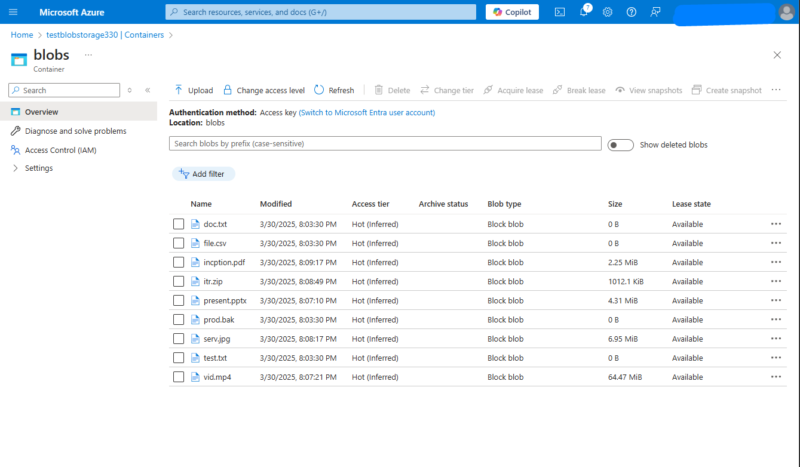
Microsoft Azure stores vast amounts of unstructured data
through its Azure Blob Storage service.
Object Storage vs Blob Storage
Object storage and blob storage are similar. They both store unstructured data as discrete units. Object storage organizes data as objects with metadata and unique identifiers. Blob storage is a type of object storage that stores large binary objects, and it’s optimized to handle large-scale multimedia and application data.
The table below highlights the differences between object and blob storage.
| Feature | Object Storage | Blob Storage |
|---|---|---|
| Definition | Stores data as objects with metadata and unique identifiers | A special type of object storage that is optimized for large binary objects |
| Use Cases | General-purpose cloud storage, backups, archives and data lakes | Multimedia storage, application data, backups and logs |
| Access Method | Accessed via RESTful APIs | Accessed via REST APIs and specific blob storage interfaces |
What Is File Storage?
File storage, also known as file-based storage, uses network-attached storage (NAS) devices to store data. It organizes data using a hierarchical folder and file structure, and it is used mostly in shared environments where many users and applications need to access the same files.
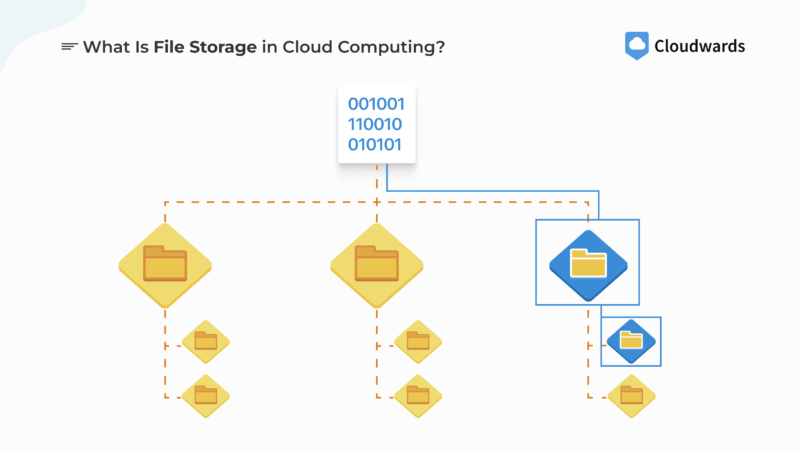
File storage supports protocols such as Network File System (NFS) and Server Message Block (SMB), making it suitable for collaboration, document management and enterprise file-sharing systems. However, it may have limited scalability for large datasets.
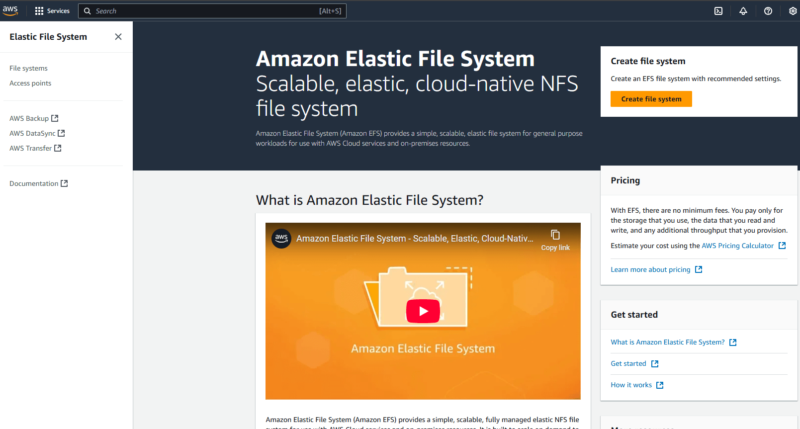
Amazon Elastic File System (EFS) provides an elastic solution for
general-purpose workloads on the AWS cloud.
Object Storage vs File Storage
Object storage manages data as objects with metadata in a flat data environment, while file storage arranges data in a structured directory and folder format. Object storage’s structure allows for greater scalability and flexibility, whereas file storage makes it easy to navigate and retrieve files.
The table below highlights the key differences between the two storage types.
| Feature | Object Storage | File Storage |
|---|---|---|
| Data Organization | Uses a flat structure with objects | Uses a hierarchical structure with folders and directories |
| Scalability | Highly scalable and supports unlimited data storage | Limited scalability due to file system constraints |
| Metadata Support | Extensive object metadata for enhanced search and automation | Limited metadata storage |
| Access Method | Accessed via RESTful APIs through HTTP | Accessed via file system protocols such as NFS and SMB |
| Performance | Optimized for high-volume data storage | Optimized for file retrieval and shared environments |
| Use Cases | Backups, media storage, data lakes and cloud applications | Enterprise file sharing, document storage and collaboration tools |
What Is Block Storage?
Block storage divides data into fixed-size blocks, each with a unique address. They are stored across multiple physical and virtual drives to deliver high performance and low latency. It is commonly used for databases, virtual machines and transactional data requiring fast read and write speeds.
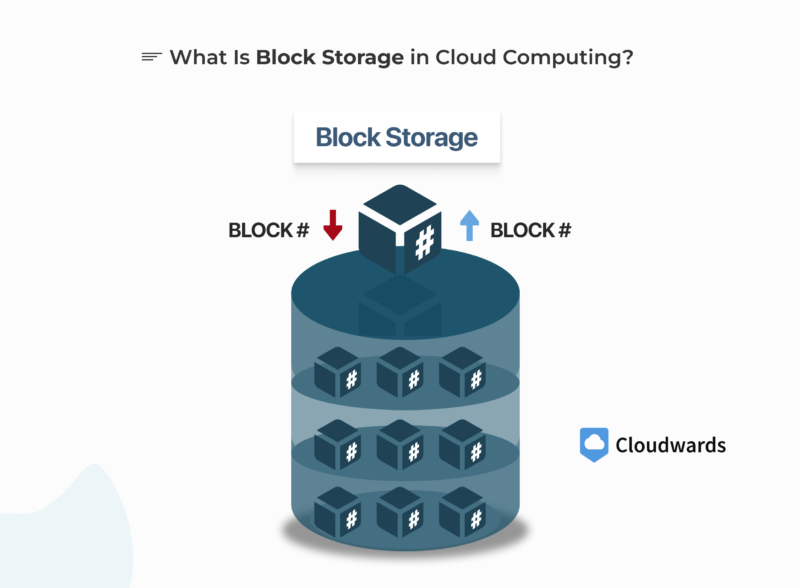
However, block storage lacks native scalability and doesn’t store file metadata with the dataset. Some examples of block storage include AWS Elastic Block Store (EBS) and Azure Disk Storage.
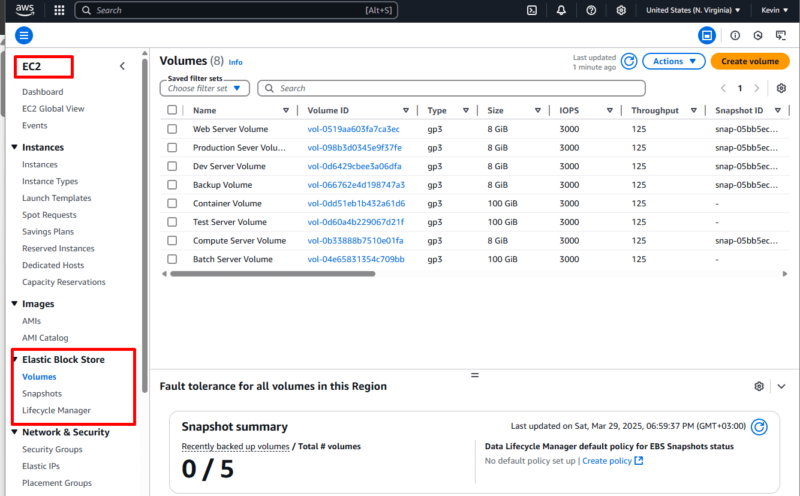
Amazon Elastic Block Store (EBS) provides a high-performance block storage service
for Amazon EC2 workloads.
Block Storage vs Object Storage
The difference between block and object storage is the underlying architecture. Object storage handles vast amounts of unstructured data with high durability and scalability. On the other hand, block storage breaks data into fixed-size blocks and stores them separately for fast and efficient access.
Additionally, block storage operates at the system level and is used as direct-attached storage (DAS) for applications. The table below shows how object storage compares to block storage.
| Feature | Object Storage | Block Storage |
|---|---|---|
| Data Structure | Stores data as objects with metadata and unique identifiers | Divides data into fixed-size blocks with addresses |
| Scalability | Highly scalable | Scalability limited by volume size |
| Performance | Higher latency and optimized for large-scale storage | Low latency with high IOPS storage for fast data access |
| Access Method | Accessed via APIs | Directly attached to servers and accessed via Storage Area Network (SAN) or Internet Small Computer System Interface (iSCSI) |
| Data Modification | Objects are immutable, and modifications create new versions | Data can be modified at the block level without replacing the file |
| Use Cases | Backups, archives, big data analytics and cloud applications | Databases, virtual machines and high-performance applications |
Benefits of Object Storage
Object storage has become very popular due to its efficient storage and management of unstructured data. It offers a highly scalable, cost-effective and flexible architecture that supports multiple data formats and object storage use cases.
Downsides of Cloud Object Storage
While object storage offers numerous data management advantages, it has limitations, especially when dealing with high-performance computing or frequent small data transactions.
Final Thoughts
Object storage excels in handling large amounts of unstructured data. It stores this data as objects with customizable metadata and unique identifiers, which increases scalability, cost-efficiency and durability. This makes it ideal for cloud applications, big data analytics and backups.
However, it trades off performance, immutability and retrieval costs in data management. Understanding these concepts will help organizations correctly deploy object storage based on their needs.
If you have any questions, experiences to share or thoughts on how object storage suits your daily needs, we would love to hear from you, so drop a comment down below. Thanks for reading.
FAQ: Object-Based Storage
-
Object storage is a modern data storage architecture that manages data as discrete units called objects. It operates using a flat address space, where each object contains customizable metadata, a globally unique identifier and the data itself.
-
S3 is called object storage since data is stored as data objects. Each object includes data, metadata and a unique key. Additionally, it uses RESTful APIs for access.
-
Object storage is popular due to its unlimited scalability, cost efficiency, durability, cloud-native compatibility and flexibility.

